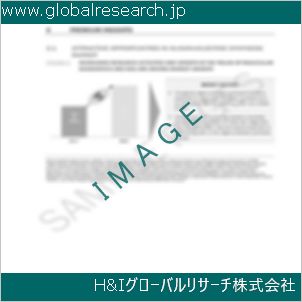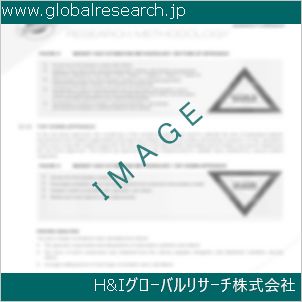Table of Contents
1 Industry Overview of 1,6-Hexanediol
1.1 Definition and Specifications of 1,6-Hexanediol
1.1.1 Definition of 1,6-Hexanediol
1.1.2 Specifications of 1,6-Hexanediol
1.2 Classification of 1,6-Hexanediol
1.3 Applications of 1,6-Hexanediol
1.3.1 Nuclear Application
1.3.2 Non-Nuclear Application
1.4 Industry Chain Structure of 1,6-Hexanediol
1.5 Industry Overview and Major Regions Status of 1,6-Hexanediol
1.5.1 Industry Overview of 1,6-Hexanediol
1.5.2 Global Major Regions Status of 1,6-Hexanediol
1.6 Industry Policy Analysis of 1,6-Hexanediol
1.7 Industry News Analysis of 1,6-Hexanediol
2 Manufacturing Cost Structure Analysis of 1,6-Hexanediol
2.1 Raw Material Suppliers and Price Analysis of 1,6-Hexanediol
2.2 Equipment Suppliers and Price Analysis of 1,6-Hexanediol
2.3 Labor Cost Analysis of 1,6-Hexanediol
2.4 Other Costs Analysis of 1,6-Hexanediol
2.5 Manufacturing Cost Structure Analysis of 1,6-Hexanediol
2.6 Manufacturing Process Analysis of 1,6-Hexanediol
3 Technical Data and Manufacturing Plants Analysis of 1,6-Hexanediol
3.1 Capacity and Commercial Production Date of Global 1,6-Hexanediol Major Manufacturers in 2023
3.2 Manufacturing Plants Distribution of Global 1,6-Hexanediol Major Manufacturers in 2023
3.3 R&D Status and Technology Source of Global 1,6-Hexanediol Major Manufacturers in 2023
3.4 Raw Materials Sources Analysis of Global 1,6-Hexanediol Major Manufacturers in 2023
4 Capacity, Production and Revenue Analysis of 1,6-Hexanediol by Regions, Types and Manufacturers
4.1 Global Capacity, Production and Revenue of 1,6-Hexanediol by Regions 2019-2024
4.2 Global and Major Regions Capacity, Production, Revenue and Growth Rate of 1,6-Hexanediol 2019-2024
4.3 Global Capacity, Production and Revenue of 1,6-Hexanediol by Types 2019-2024
4.4 Global Capacity, Production and Revenue of 1,6-Hexanediol by Manufacturers 2019-2024
5 Price, Cost, Gross and Gross Margin Analysis of 1,6-Hexanediol by Regions, Types and Manufacturers
5.1 Price, Cost, Gross and Gross Margin Analysis of 1,6-Hexanediol by Regions 2019-2024
5.2 Price, Cost, Gross and Gross Margin Analysis of 1,6-Hexanediol by Types 2019-2024
5.3 Price, Cost, Gross and Gross Margin Analysis of 1,6-Hexanediol by Manufacturers 2019-2024
6 Consumption Volume, Consumption Value and Sale Price Analysis of 1,6-Hexanediol by Regions, Types and Applications
6.1 Global Consumption Volume and Consumption Value of 1,6-Hexanediol by Regions 2019-2024
6.2 Global and Major Regions Consumption Volume, Consumption Value and Growth Rate of 1,6-Hexanediol 2019-2024
6.3 Global Consumption Volume and Consumption Value of 1,6-Hexanediol by Types 2019-2024
6.4 Global Consumption Volume and Consumption Value of 1,6-Hexanediol by Applications 2019-2024
6.5 Sale Price of 1,6-Hexanediol by Regions 2019-2024
6.6 Sale Price of 1,6-Hexanediol by Types 2019-2024
6.7 Sale Price of 1,6-Hexanediol by Applications 2019-2024
6.8 Market Share Analysis of 1,6-Hexanediol by Different Sale Price Levels
7 Supply, Import, Export and Consumption Analysis of 1,6-Hexanediol
7.1 Supply, Consumption and Gap of 1,6-Hexanediol 2019-2024
7.2 Global Capacity, Production, Price, Cost, Revenue, Supply, Import, Export and Consumption of 1,6-Hexanediol 2019-2024
7.3 USA Capacity, Production, Price, Cost, Revenue, Supply, Import, Export and Consumption of 1,6-Hexanediol 2019-2024
7.4 EU Capacity, Production, Price, Cost, Revenue, Supply, Import, Export and Consumption of 1,6-Hexanediol 2019-2024
7.5 China Capacity, Production, Price, Cost, Revenue, Supply, Import, Export and Consumption of 1,6-Hexanediol 2019-2024
7.6 Japan Capacity, Production, Price, Cost, Revenue, Supply, Import, Export and Consumption of 1,6-Hexanediol 2019-2024
8 Major Manufacturers Analysis of 1,6-Hexanediol
8.1 Manufacturer One
8.1.1 Company Profile
8.1.2 Product Picture and Specifications
8.1.2.1 Type I
8.1.2.2 Type II
8.1.2.3 Type III
8.1.3 Capacity, Production, Price, Cost, Gross and Revenue
8.1.4 Contact Information
8.2 Manufacturer Two
8.2.1 Company Profile
8.2.2 Product Picture and Specifications
8.2.2.1 Type I
8.2.2.2 Type II
8.2.2.3 Type III
8.2.3 Capacity, Production, Price, Cost, Gross and Revenue
8.2.4 Contact Information
8.3 Manufacturer Three
8.3.1 Company Profile
8.3.2 Product Picture and Specifications
8.3.2.1 Type I
8.3.2.2 Type II
8.3.2.3 Type III
8.3.3 Capacity, Production, Price, Cost, Gross and Revenue
8.3.4 Contact Information
8.4 Manufacturer Four
8.4.1 Company Profile
8.4.2 Product Picture and Specifications
8.4.2.1 Type I
8.4.2.2 Type II
8.4.2.3 Type III
8.4.3 Capacity, Production, Price, Cost, Gross and Revenue
8.4.4 Contact Information
8.5 Manufacturer Five
8.5.1 Company Profile
8.5.2 Product Picture and Specifications
8.5.2.1 Type I
8.5.2.2 Type II
8.5.2.3 Type III
8.5.3 Capacity, Production, Price, Cost, Gross and Revenue
8.5.4 Contact Information
…
9 Marketing Trader or Distributor Analysis of 1,6-Hexanediol
9.1 Marketing Channels Status of 1,6-Hexanediol
9.2 Traders or Distributors with Contact Information of 1,6-Hexanediol by Regions
9.3 Ex-work Price, Channel Price and End Buyer Price Analysis of 1,6-Hexanediol
9.4 Regional Import, Export and Trade Analysis of 1,6-Hexanediol
10 Industry Chain Analysis of 1,6-Hexanediol
10.1 Upstream Major Raw Materials Suppliers Analysis of 1,6-Hexanediol
10.1.1 Major Raw Materials Suppliers with Contact Information Analysis of 1,6-Hexanediol
10.1.2 Major Raw Materials Suppliers with Supply Volume Analysis of 1,6-Hexanediol by Regions
10.2 Upstream Major Equipment Suppliers Analysis of 1,6-Hexanediol
10.2.1 Major Equipment Suppliers with Contact Information Analysis of 1,6-Hexanediol
10.2.2 Major Equipment Suppliers with Product Pictures Analysis of 1,6-Hexanediol by Regions
10.3 Downstream Major Consumers Analysis of 1,6-Hexanediol
10.3.1 Major Consumers with Contact Information Analysis of 1,6-Hexanediol
10.3.2 Major Consumers with Consumption Volume Analysis of 1,6-Hexanediol by Regions
10.4 Supply Chain Relationship Analysis of 1,6-Hexanediol
11 Development Trend of Analysis of 1,6-Hexanediol
11.1 Capacity, Production and Revenue Forecast of 1,6-Hexanediol by Regions and Types
11.1.1 Global Capacity, Production and Revenue of 1,6-Hexanediol by Regions 2024-2029
11.1.2 Global and Major Regions Capacity, Production, Revenue and Growth Rate of 1,6-Hexanediol 2024-2029
11.1.3 Global Capacity, Production and Revenue of 1,6-Hexanediol by Types 2024-2029
11.2 Consumption Volume and Consumption Value Forecast of 1,6-Hexanediol by Regions, Types and Applications
11.2.1 Global Consumption Volume and Consumption Value of 1,6-Hexanediol by Regions 2024-2029
11.2.2 Global and Major Regions Consumption Volume, Consumption Value and Growth Rate of 1,6-Hexanediol 2024-2029
11.2.3 Global Consumption Volume and Consumption Value of 1,6-Hexanediol by Types 2024-2029
11.2.4 Global Consumption Volume and Consumption Value of 1,6-Hexanediol by Applications 2024-2029
11.3 Supply, Import, Export and Consumption Forecast of 1,6-Hexanediol
11.3.1 Supply, Consumption and Gap of 1,6-Hexanediol 2024-2029
11.3.2 Global Capacity, Production, Price, Cost, Revenue, Supply, Import, Export and Consumption of 1,6-Hexanediol 2024-2029
11.3.3 USA Capacity, Production, Price, Cost, Revenue, Supply, Import, Export and Consumption of 1,6-Hexanediol 2024-2029
11.3.4 EU Capacity, Production, Price, Cost, Revenue, Supply, Import, Export and Consumption of 1,6-Hexanediol 2024-2029
11.3.5 China Capacity, Production, Price, Cost, Revenue, Supply, Import, Export and Consumption of 1,6-Hexanediol 2024-2029
11.3.6 Japan Capacity, Production, Price, Cost, Revenue, Supply, Import, Export and Consumption of 1,6-Hexanediol 2024-2029
12 New Project Investment Feasibility Analysis of 1,6-Hexanediol
12.1 New Project SWOT Analysis of 1,6-Hexanediol
12.2 New Project Investment Feasibility Analysis of 1,6-Hexanediol
13 Conclusion of the Global 1,6-Hexanediol (CAS 629-11-8) Industry 2024 Market Research Report
| ※参考情報 1,6-ヘキサンジオールは、化学式C6H14O2を持つジオールであり、C(炭素)6個とO(酸素)2個から構成されています。CAS番号は629-11-8であり、化学的には長鎖のアルカンに2つのヒドロキシ基(−OH)が結合した構造をしています。この化合物は、常温では透明な液体または低融点の結晶であり、無色無臭の特性を持っています。 1,6-ヘキサンジオールは主に合成化学や材料科学の分野で利用されており、その特性から多くの応用が見出されています。特に、ポリウレタンやエポキシ樹脂などのポリマーの合成において重要な中間体として知られています。このジオールは、柔軟性と耐薬品性を兼ね備えた樹脂を製造するために使用されます。そのため、工業用や家庭用商品において非常に重要な材料です。 1,6-ヘキサンジオールの特徴の一つは、広い範囲のpH条件下でも安定であり、酸やアルカリに対して強い耐性を持つことです。この特性は、さまざまな条件下で使用される製品において非常に重要です。また、低い揮発性と優れた溶解性を持つため、他の化学物質と組み合わせて使用する際にもその性質を活かすことができます。 主な用途としては、以下のようなものがあります。まず、ポリウレタン合成のための重要な原料として使用されます。ポリウレタンは、さまざまな製品に利用されており、柔軟なスポンジから硬質な発泡体、自動車のシート、靴、塗料、接着剤など、非常に幅広い範囲で応用されています。また、エポキシ樹脂の合成にも使用され、これもまた高い耐久性と強度を持つ材料の製造に寄与しています。さらに、1,6-ヘキサンジオールは、コーティング剤や添加剤、さらには化粧品や医薬品の製造においても利用されることがあります。 加えて、1,6-ヘキサンジオールは、バイオマス由来の化合物と結合させた新しい材料の開発にも用いられています。これにより、環境に配慮した製品の開発が可能となり、持続可能な社会の実現に向けた一助になっています。特に、グリーンケミストリーの観点から、より環境に優しい合成経路が模索されており、その中で1,6-ヘキサンジオールが重要な役割を果たしています。 関連技術の進展により、1,6-ヘキサンジオールを使用した新しい材料の研究開発が進んでいます。たとえば、ナノコンポジット材料や生分解性プラスチックなどの研究が行われており、これにより新しい機能を持つ製品の販売が見込まれています。また、迅速な反応速度や条件の変化に強い特性を持つため、プロセスの効率化や省エネルギー化が期待されています。 1,6-ヘキサンジオールを扱う際には、適切な取り扱いと安全管理が必要です。化学物質としての特性から、目や皮膚に対する刺激があるため、安全対策が求められます。また、吸入や飲食に対する注意も必要であり、使用時には適切な防護具を着用することが推奨されます。各国の規制に従って安全に取り扱うことが重要です。 最終的に、1,6-ヘキサンジオールは、現代の材料科学や合成化学において重要な位置を占めており、その特性や用途は多岐にわたります。これからの研究によって、新たな利用法が発見される可能性も高く、今後の展開に期待が寄せられています。このような背景を踏まえ、1,6-ヘキサンジオールは今後もさまざまな産業においてその価値を発揮することが期待されます。 |
❖ 免責事項 ❖
http://www.globalresearch.jp/disclaimer












